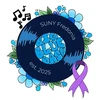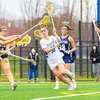Visiting Assistant Professor Gurmukh Singh will present the 2007 Kasling Memorial Lecture, “The Birth and Death of a Star,” at 2 p.m. on Tuesday, Sept. 18, in the Juliet J. Rosch Recital Hall. The Kasling Lecture recognizes a member of the faculty whose scholarly excellence has enhanced the reputation of the university.
 |
| Dr. Gurmukh Singh |
A member of the faculty in the Department of Computer and Information Sciences, Dr. Singh was born in a tiny village in the state of Punjab, North India. After completing a B.S. in physics, chemistry and mathematics from a countryside college, he joined the physics department at Punjab University, graduating with a B.S. Honors in Physics, followed by an M.S. Honors and Ph.D. in Nuclear and Astrophysics. After immigrating to the U.S. in 1985 as the recipient of a post doctoral fellowship at the State University at Buffalo, Dr. Singh taught at several area colleges before joining the Fredonia faculty.
Dr. Singh has published over 100 scholarly articles, of which almost 80 are in reputed American, European and Asian journals. His current research interests are in the fields of nuclear physics, astrophysics and space science, and elementary particle physics, involving computer modeling, data acquisition and its analysis. In his research, Dr. Singh investigates characteristics of singly-charged (hadrons) and multi-charged projectile fragments emerged in heavy-ion interactions at relativistic energies from experiments performed at national and international accelerator facilities like the Brookhaven National Laboratory (BNL) and the European Center for Nuclear Research (CERN) in Geneva, Switzerland. For computer modeling, he does extensive Monte Carlo simulations on high speed computers.
Dr. Singh published two important papers in the Journal of Physics G: Nuclear and Particle Physics in 2006 and 2007, based on his collaboration with Dr. A. Mukhopadhyay of the Department of Physics at the University of North Bengal, Siliguri, India. Their collaborative work has resulted in interesting and encouraging results in the non-statistical, dynamical fluctuations of produced hadrons in relativistic heavy ion collisions. His current work represents a continued effort from the past two decades on the subject of non-statistical fluctuations, which has been referred to in more than 130 research articles throughout the world.
The thirty-second Kasling Lecture is named for Robert W. Kasling, professor of geography at SUNY Fredonia from 1946 to 1966, who, by his own example, fostered in others the unflinching personal integrity and high standard of scholarship for which he is especially remembered. The lecture is focused on explaining the methods, purposes, and results of a particular area of scholarship and is intended to broaden the understanding or research being undertaken at the university.
The recipient of the William T. Hagan Young/Scholar Artist Award, recognizing an individual who has made outstanding recent achievements in research or creativity, will also be announced during the event by Kasling Memorial Lecture Chair James Piorkowski. The award and is named n honor of SUNY Distinguished Professor Emeritus William T. Hagan, an eminent scholar specializing in the history of the American Indian, who taught history at SUNY Fredonia from 1966 until 1988 and also served as department chair and as acting vice president for Academic Affairs.
A reception follows the lecture in the lobby of Rosch Recital Hall.



